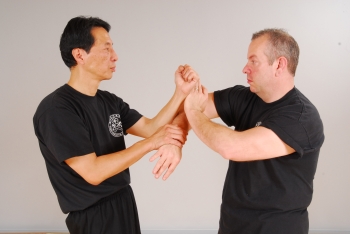Geezer this post is in your honor, happy belated birthday by the way!
INTERESTING, I PRACTICE Yuen Kay San Wing chun. In our system we have several things we practice.
1. Strength and conditioning
2. Chi Sau
3. Gor sau
4. Free Sparring
5. We also have San Shou drills you perform with partners
6. AS well as solo training
San Shou drills can be defensive drills where you practice intercepting or deflecting attacks while punching or kicking simultaneously, It also includes practicing joint locking and manipulation, sweeps,throws, from a grab, kick or punch from your opponent. Its also lively free defending attacks while cornered. As well as set drills like Lop Sau, Jut da, tan da, bil da, and many others where you work on receiving a strike and them reacting to it. Learning timing etc. Now all of this is not free sparring. But with out conditioning and strength training you won't have bullets to put in your gun same goes for chi sau. Chi Sau is an integral part of WC. Now not all fighters have sensitivity but some do. We train Both touch sensitivity and sight sensitivity being able from a distance or not touching to defend attacks.
The question has been asked "What does Wing Chun need in the 21st century?" My answer, eliminate Chi Sau or at least minimize its "importance" as a litmus into the efficacy of martial prowess. My questions to Chunners everywhere is:
1. Do you truly believe that Chi Sau is the "Key" to making Wing Chun work?
2. If Chi Sau is really such an effective training process why don't arts like Muay Thai, Boxing, Wrestling or Jujutsu (all arts that have proven themselves effective in sport and street fighting) adopt the method?
3. For all those that say "Chi Sau isn't fighting", then why act like it is and put such emphasis on it as to make it integral to the functionality of the art?
Let the sh!t show begin! Geezer you're welcome, lol.

